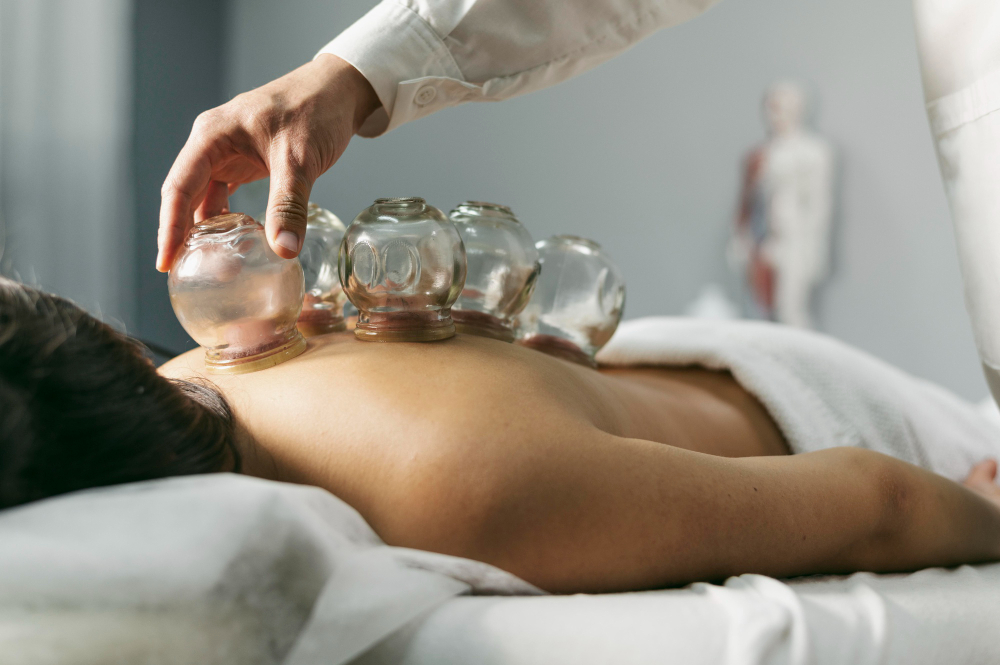



Dry Cupping Therapy: The first type of therapy is dry cupping therapy. It is a therapy performed only with cups, without bloodletting or incisions. It is beneficial for respiratory system problems, digestive system problems, and immune system problems.
Wet Cupping Therapy (Hijama): Commonly known as "Hijama" in colloquial terms, wet cupping therapy involves cupping with the advice of the Prophet Muhammad. After determining the acupuncture points on the body, cups are vacuumed, and then blood is drawn by making incisions with a scalpel, lancet, or razor. It has many benefits.
Before performing Wet Cupping Therapy (Hijama), points are identified. After identifying the points, the skin is cleaned with antiseptic liquids such as alcohol or vinegar. Cups are vacuumed and secured to the points where Hijama will be performed. After waiting for an average of 3-5 minutes, the cups are removed. Incisions are made rapidly at the vacuumed points with a scalpel or razor to a depth of approximately 0.5-1.0 mm and a width between 0.50-0.75 cm. After the incisions, the cups are vacuumed again and placed on the points. After waiting for 6-10 minutes, the cups are removed
, and the expelled blood is disposed of from the body. Finally, the area is cleaned with St. John's Wort oil and bandaged. In this way, Wet Cupping (Hijama) is completed.
The patient should be well analyzed before performing Hijama. The room should be sterile. A stretcher should be used, and the environment should be quiet and calm. The patient to undergo Hijama should be taught diaphragmatic breathing. If the patient does not have urgency, adherence to scheduled Hijama days maximizes efficiency. Materials should be disposable and sterile. Attention should be paid to the vacuuming process.
Hijama is known to be beneficial for all diseases related to blood. It opens blockages that occur or may occur in capillaries. It facilitates the removal of toxins and gases formed in the blood and tissues. It helps in the elimination of edema in the body. It is good for dermatological problems such as acne, eczema, and psoriasis. Some sources claim that it is beneficial for forgetfulness. It can be used in the symptomatic treatment of pharyngitis, colds, and flu problems.
Head Hijama is very effective for migraines and occipital neuralgia.
Hijama can be performed with peace of mind for individuals aged 2-63. It should be done very carefully in patients aged 63-80. It is not performed on individuals over 80 years old as it does not provide benefits. Hijama is also not performed on patients with a pacemaker. It should not be performed on patients who have undergone organ transplantation. It should not be performed on a patient within 65 days of surgery. Hijama is not performed on patients with hemophilia, anemia, and cancer. Extreme caution is required when performing Hijama on pregnant women.
